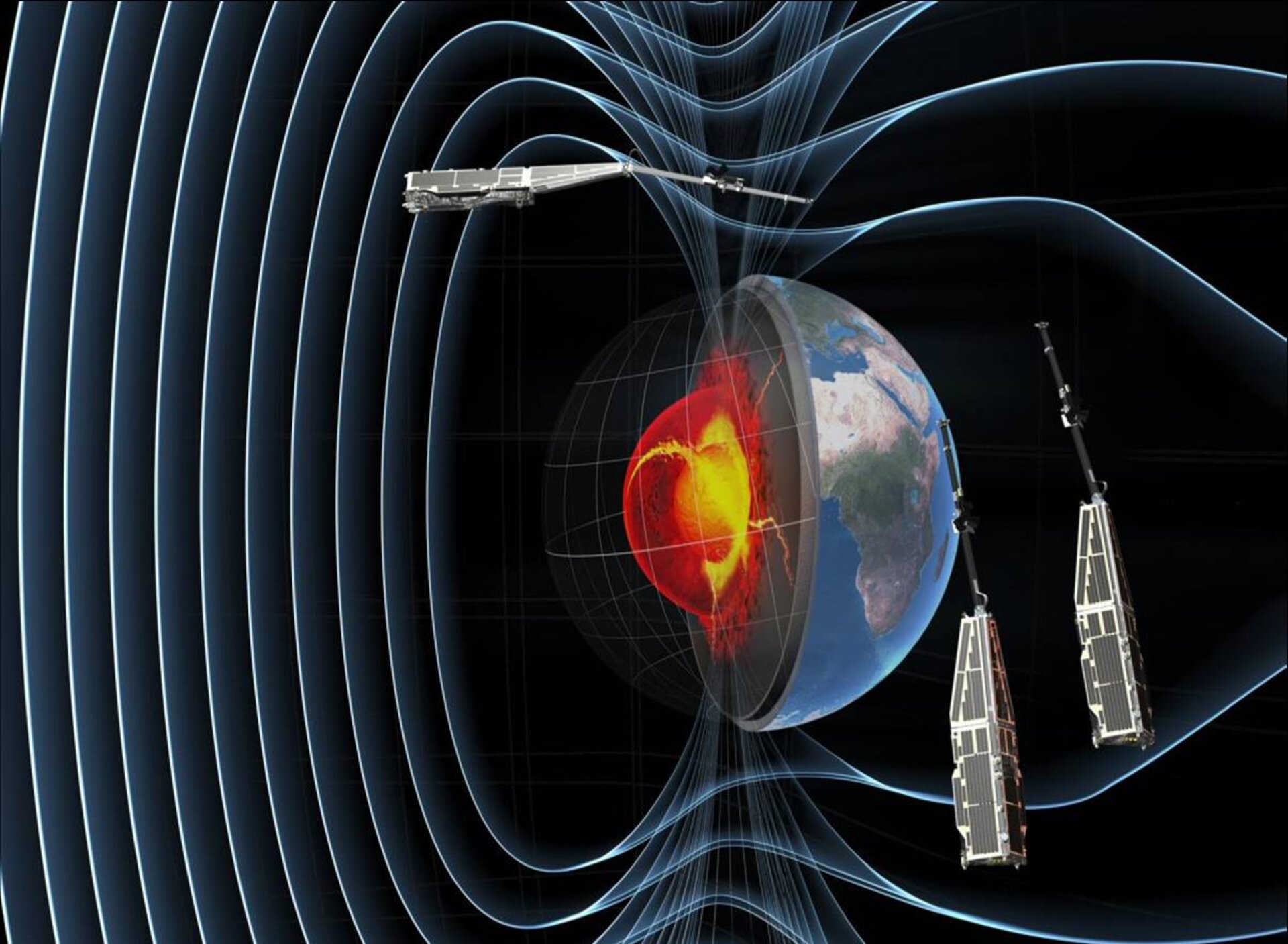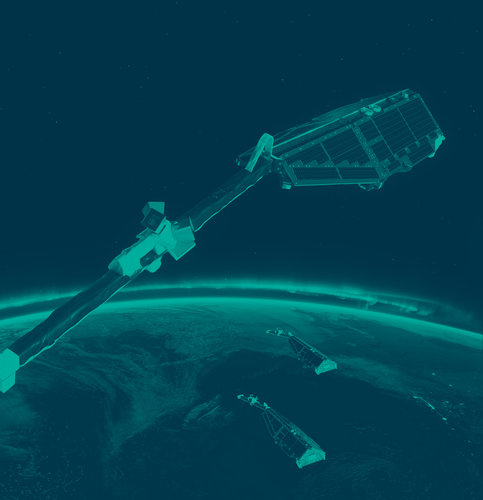Science community to discuss benefits of ESA's Swarm mission
With ESA's magnetic field mission due for launch in less than two years, the Agency is organising the Second Swarm International Science Meeting. The meeting will provide the forum for leading scientists, as well as students, to discuss how data from the mission can address challenges in fields of science associated with geomagnetism.
The meeting is hosted by the GFZ Helmholtz Centre Potsdam in Germany and will take place on 24-26 June 2009. Over the two days, the status of the Swarm mission will be presented to the participants along with new scientific results in connection with the objectives of the mission. Moreover, it is envisaged that members of the geomagnetic science community will discuss particular research objectives and new potential areas that Swarm data could be of benefit.
Currently under construction, the three-satellite Swarm constellation follows on from a series of high-precision satellites studying Earth's magnetic field; namely the Danish Ørsted satellite, the German CHAMP satellite and the international SAC-C mission. Swarm aims to provide the best-ever survey the geomagnetic field and its temporal evolution whilst completing more than a decade of observations of the magnetic field within the context of the International Decade of Geopotential Research.
Swarm will lead to new insights into the Earth system by improving our understanding of Earth’s interior and its effect on geospace – the vast region around Earth where electrodynamic processes are influenced by the magnetic field. High-precision and high-resolution measurements of the strength, direction and variation of the magnetic field, complemented by precise navigation, accelerometer and electric field measurements, will provide the necessary observations that are required to separate and study the various sources of the magnetic field around Earth.
Swarm will also allow for an analysis of the Sun’s influence on the Earth system. In addition, practical applications in many different areas, such as space weather, radiation hazards, navigation and resource management could benefit from the Swarm mission.
The forthcoming Swarm meeting promises to be a stimulating event for all those interested in furthering our understanding of Earth's magnetic field. There is no charge for attending the meeting; however, it is necessary to register before 21 May 2009.
For more information about attending and registering, please visit:
Second Swarm International Science Meeting






